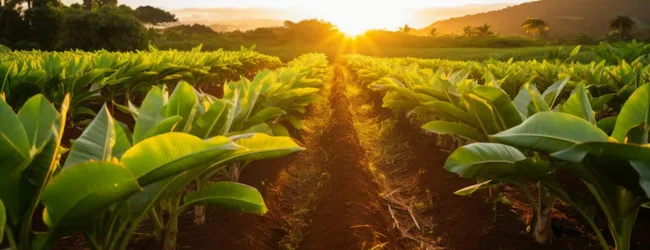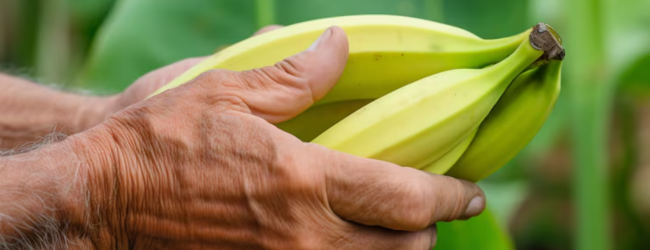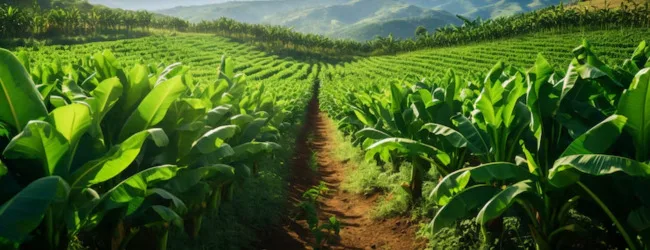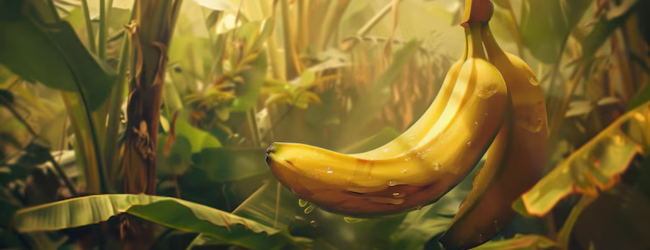Table of contents
- Why Banana Farming?
- Major Banana Producing States in India
- Popular Banana Varieties in India
- Step-by-Step Banana Farming Process
- Irrigation & Water Management
- Fertiliser and Nutrition Schedule
- Pest & Disease Management
- Harvesting and Post-Harvest Handling
- Yield and Profit Analysis (Per Acre)
- Business Opportunities in Banana Farming
- Challenges and Tips
- Government Support & Subsidies
- Conclusion
- Frequently Asked Questions (FAQs)
Banana farming is one of the most profitable and fast-growing agricultural practices in India, especially in tropical and sub-tropical regions. With India being the world’s largest banana producer, this crop not only feeds millions but also provides a livelihood to thousands of farmers. In this step-by-step guide, we’ll walk you through everything you need to know about banana cultivation—from choosing the right variety to marketing your produce profitably.
Why Banana Farming?

Before starting, here’s why banana farming is gaining popularity in India:
- India is the largest banana producer globally, contributing over 25% of total world production (FAO 2023).
- Banana is a year-round crop, offering steady income.
- High demand in domestic and export markets (especially the Middle East, Bangladesh, and Nepal).
- Used in multiple forms: fresh fruit, chips, banana puree, fibre extraction, and even leaf plates.
Major Banana Producing States in India
| State | Area Covered (in hectares) | Key Varieties Grown |
|---|---|---|
| Maharashtra | 91,000+ | Grand Naine, Shrimanti |
| Tamil Nadu | 90,000+ | Poovan, Nendran |
| Gujarat | 87,000+ | Grand Naine, Basrai |
| Andhra Pradesh | 75,000+ | Rasthali, Amritpani |
| Karnataka | 63,000+ | Robusta, Red Banana |
💡 Pro Tip: If you want to start a Business but have too many doubts, connect with a Business expert from Boss Wallah for guidance – Check Out
Popular Banana Varieties in India

Selecting the right variety is key to success:
- Grand Naine (G9) – Most commercial, high-yielding, disease-resistant.
- Robusta – Suitable for fresh consumption and processing.
- Poovan – Popular in Tamil Nadu for its taste and shelf life.
- Nendran – Best for making banana chips in Kerala.
- Red Banana – Nutrient-rich, high market value.
Step-by-Step Banana Farming Process
1. Soil and Climate Requirements
- Soil: Well-drained, loamy soil with pH between 6.5 to 7.5.
- Climate: Requires warm and humid weather (20–35°C).
- Avoid frost and heavy winds.
2. Land Preparation
- Deep ploughing followed by levelling.
- Mix FYM (Farm Yard Manure) @ 40–50 tons/ha.
- Prepare pits (45x45x45 cm) for planting.
3. Planting Season
- Ideal time: June–July (rain-fed areas), October–November (irrigated areas).
- Use tissue-cultured plants for higher yield and disease resistance.
4. Spacing & Planting
- Spacing: 1.8m x 1.5m (approx. 1,480 plants/acre).
- Plant upright and irrigate immediately.
Irrigation & Water Management

- Banana requires high water, 1,200 to 2,500 mm annually.
- Use drip irrigation for optimal water and fertiliser use.
- Water intervals:
- Summer: every 3–4 days
- Winter: every 7–8 days
- Rainy season: only if necessary
Fertiliser and Nutrition Schedule
| Fertilizer Type | Quantity/Plant/Year | Application Stage |
|---|---|---|
| FYM | 10-15 kg | Before planting |
| Urea (N) | 200g | 3 splits (30, 90, 150 days) |
| SSP (P) | 150g | Basal dose |
| MOP (K) | 200g | 3 splits |
| Micronutrients | As required | Foliar sprays monthly |
ALSO READ | Permaculture Farming: A Comprehensive Guide
Pest & Disease Management
Common Pests:
- Banana Weevil
- Aphids
- Nematodes
Diseases:
- Panama Wilt (caused by Fusarium)
- Sigatoka Leaf Spot
Control Measures:
- Use disease-free tissue culture plants.
- Apply Trichoderma and neem cake.
- Practice crop rotation and field sanitation.
Harvesting and Post-Harvest Handling

- Harvest after 11–13 months, depending on variety.
- Signs: fruit turns light green, angular edges round off.
- Cutthe bunch carefully, avoid bruising.
- Wash and treat with fungicide for storage.
- Grade and pack in ventilated boxes for market.
Yield and Profit Analysis (Per Acre)
| Input | Value (INR) |
|---|---|
| Plants (1,480 @ ₹12 each) | ₹17,760 |
| Fertilizer & Manure | ₹10,000 |
| Drip irrigation setup | ₹15,000 (once) |
| Labor & Maintenance | ₹18,000 |
| Total Cost | ₹60,000–₹65,000 |
| Average Yield | 30–35 tons/acre |
| Selling Price (avg) | ₹15/kg |
| Gross Income | ₹4,50,000+ |
| Net Profit | ₹3,80,000–₹4,00,000/year |
✅ High ROI makes banana farming one of the most profitable agri-businesses.
ALSO READ | Indigo Farming: How to Start, Demand, Profit Margin & More
Business Opportunities in Banana Farming

- Fresh fruit market – supermarkets, mandis, export.
- Banana chips production – especially the Nendran variety.
- Banana fibre extraction – used in textiles and eco-friendly products.
- Banana leaf sales – for food packaging and serving.
- Processed items – puree, jam, wine, and vinegar.
Challenges and Tips
- Market price fluctuations.
- Susceptible to wind damage – plant windbreaks.
- Disease outbreaks – use tissue culture and maintain hygiene.
- Insurance & government support – apply for PMFBY crop insurance.
Government Support & Subsidies
- National Horticulture Board (NHB) – offers subsidies on drip irrigation, cold storage, and post-harvest tech.
- MIDH Scheme – support for banana tissue culture and marketing.
- NABARD and the State Agri Departments offer banana farming loans with subsidies.
Visit the NHB website | PMFBY official site
Need Expert Guidance?
Starting a business can be challenging, but you don’t have to do it alone! At Boss Wallah, our 2,000+ business experts are ready to provide valuable insights and guidance. Whether you need help with marketing, finance, sourcing, or any other area of any business, our business experts are here to help you succeed
Confused about Which Business to Start?
Want to start your own business but unsure which one to choose? Explore Boss Wallah, where you’ll find 500+ courses by successful business owners, featuring practical, step-by-step guides on starting and growing various businesses.
Find your perfect business idea today
Conclusion
Banana farming in India is a goldmine for aspiring farmers and agripreneurs. With proper knowledge, use of high-yielding varieties, smart irrigation, and market connections, you can easily turn this into a profitable venture. Start small, follow best practices, and scale as you learn. This guide is your first step toward a fruitful banana business.
Frequently Asked Questions (FAQs)
1. Which variety of banana is best for farming in India?
Grand Naine (G9) is widely used due to its high yield and market demand.
2. How much land is needed to start banana farming?
You can start with as little as 1 acre.
3. How long does it take for bananas to grow?
It takes 11–13 months to harvest.
4. Is banana farming profitable?
Yes, with good practices, net profit can exceed ₹3 lakh per acre.
5. What climate is best for banana farming?
A warm and humid climate (20–35°C) is ideal.
6. Can bananas be grown in dry regions?
Yes, using drip irrigation and good soil management.
7. What are the main diseases in banana farming?
Panama Wilt, Sigatoka Leaf Spot.
8. Are there any subsidies for banana farming?
Yes, under the NHB and MIDH schemes.
9. Where can I sell bananas in bulk?
APMC mandis, processors, exporters, and supermarkets.
10. Can I grow bananas organically?
Yes, but expect slightly lower yields; premium prices offset the difference.


